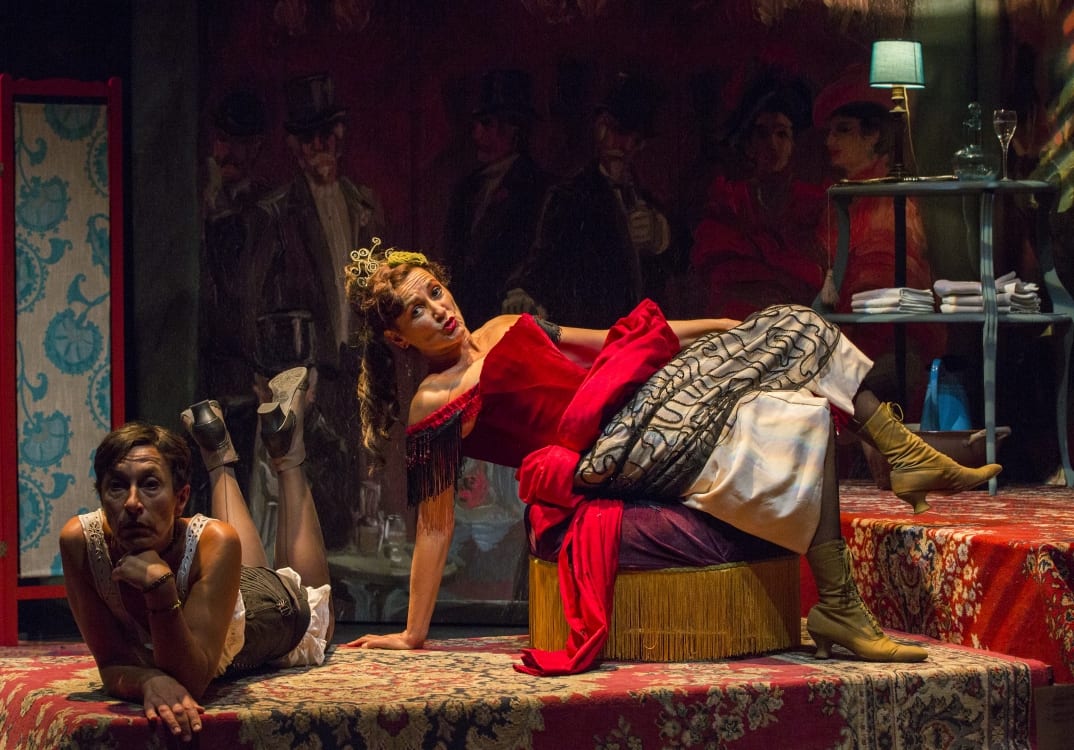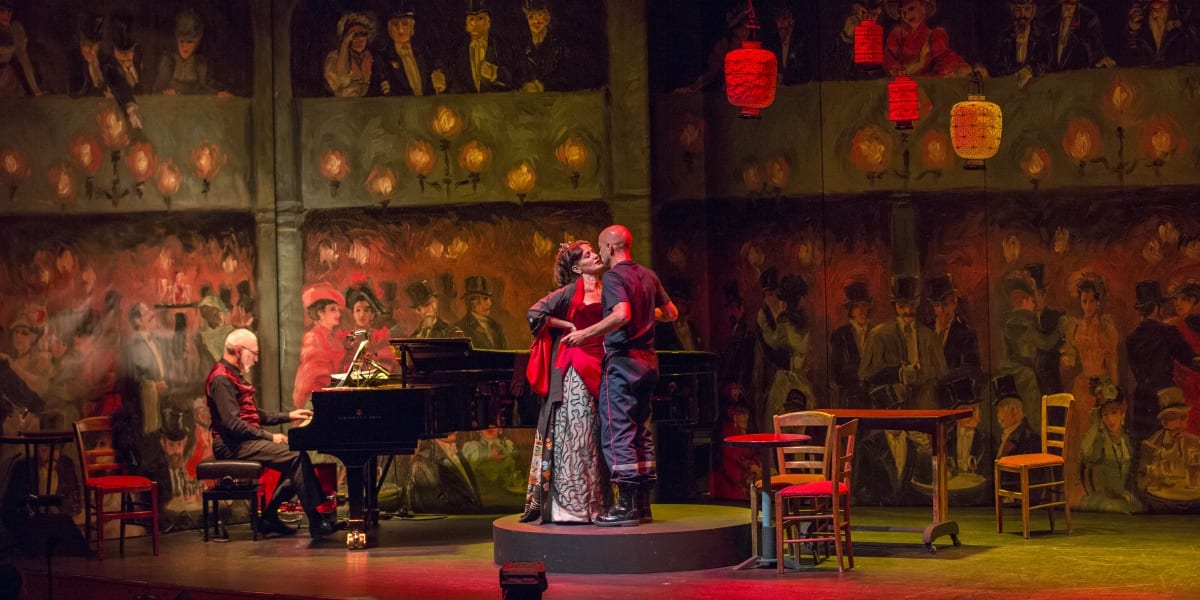Located in the middle of the Vincennes forest, right after the horse stables, is a lovely wooden theatre with high ceilings and wood carvings on the walls called le Théâtre de l’Epée de Bois. The play currently showing lives up to the extraordinary setting.
Created at the Orsay Museum for the opening of the “Splendour and Misery. Pictures of Prostitution, 1850-1910” exhibit back in 2015, Café Polisson takes place in a Parisian cabaret or “café-concert” surrounded by spectators; in front of the scene is the real audience but behind it are painted spectators offering a mirrored reflection of society.
By the entertaining means of music, dance, humour and sarcasm, five actors enter a smoke filled stage to sing about their life in the cabaret. Every night, the courtesans list their prices to their exclusively male clientele, using humourous detours to avoid censorship. They talk about what it’s like, how they started (the youngest is only 14) and how the money adds up only to fall into the hands of a man.
The actors can sing, play various instruments (piano, accordion, trumpet, guitar), dance, and certainly act. However, after an energetic start, the play drags on a bit, with a couple of long duos between the lead singer and the pianist with little interaction between the two. But as soon as the fabulous Bénédicte Charpiat-Kerr walks in, with a new disguise at every entrance, all is forgotten. Her metamorphoses as a prostitute, as an elegant young man, a cabaret dancer and even as a projection screen are jaw-dropping.
After work, when the green light settles in the cabaret, she sits down alone with a glass of absinthe, her hand holding her tired face – beautifully illustrating her solitude and simultaneously reminiscent of Picasso’s Absinthe Drinker. The play is a tribute to the courtesans, to the absinthe drinkers, to the showgirls, to the independent women. It’s not a mere coincidence that the show starts the week of International Women’s Day.

